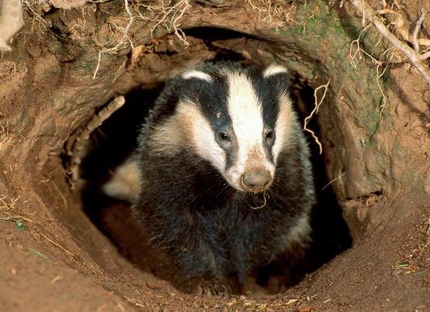Badgers really are solitary animals. The typical population density is about 12 animals per square mile. Badgers are nocturnal, meaning they are mainly active at night. During the winter months, they tend to be inactive. However, badgers are not true hibernators, but spend much of the winter in cycles of torpor that usually last about 29 hours. During torpor body temperatures fall to about 48 degrees F and the heart beats at about half the normal rate. They emerge from their dens on warm days in the winter. Badger behavior is physical as well as physiological. Badgers are digging machines. Their powerfully built forelimbs allow them to tunnel rapidly through the soil, and apparently through other harder substances as well. There are anecdotal accounts of badgers emerging from holes they have excavated through blacktopped pavement and even two inch thick concrete!
Badger burrows are constructed mainly in the pursuit of prey, but they are also used for sleeping. A typical badger den may be as far a 9 feet below the surface, contain about 30 feet of tunnels, and have an enlarged chamber for sleeping. Badgers use multiple burrows within their home range, and they may not use the same burrow more than once a month. In the summer months they may dig a new burrow each day. That is just a bit about badgers!
